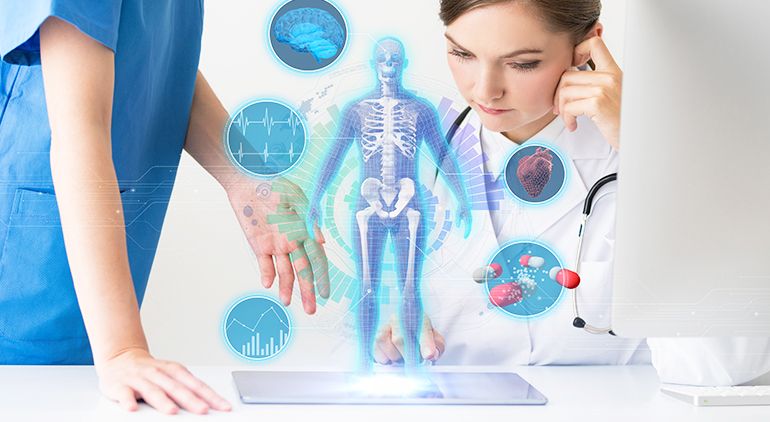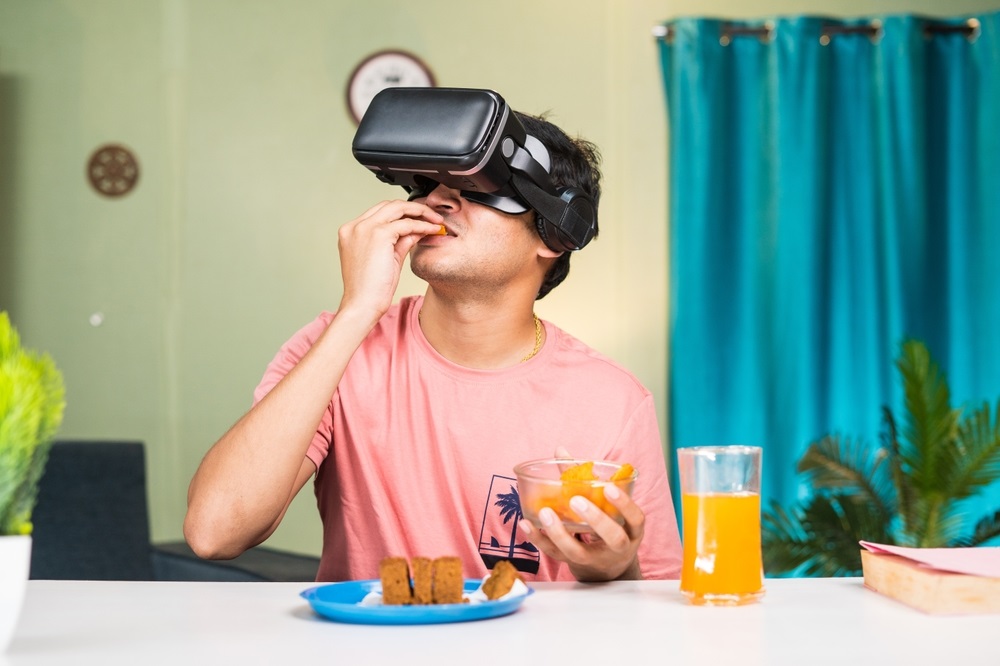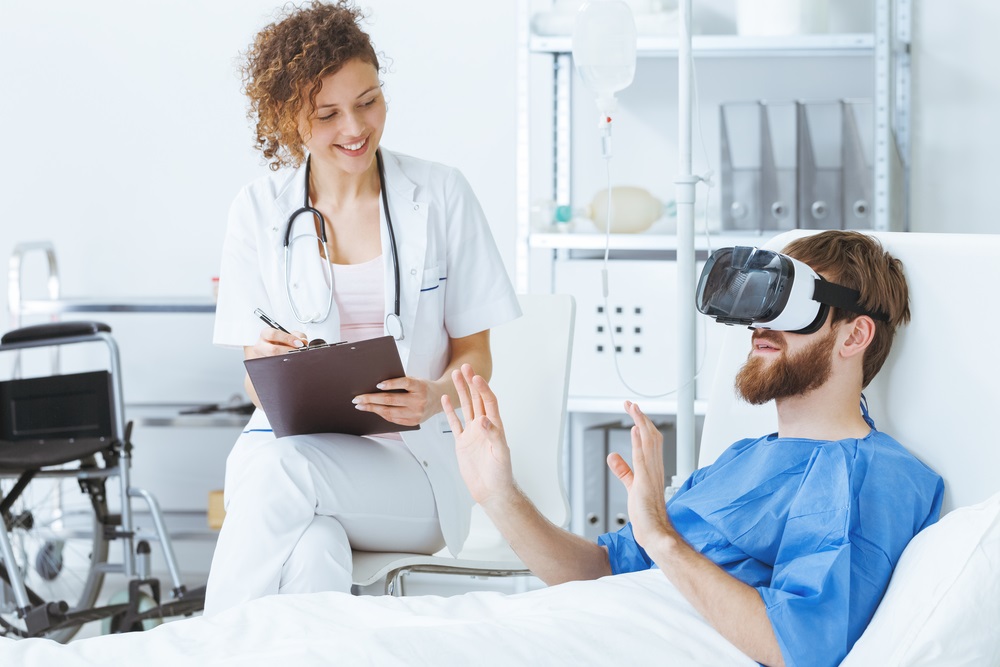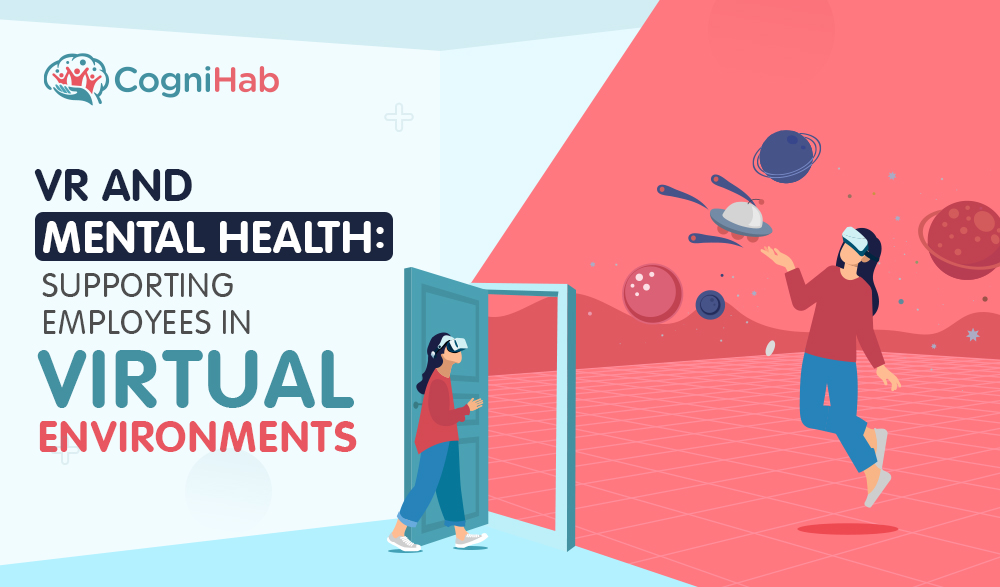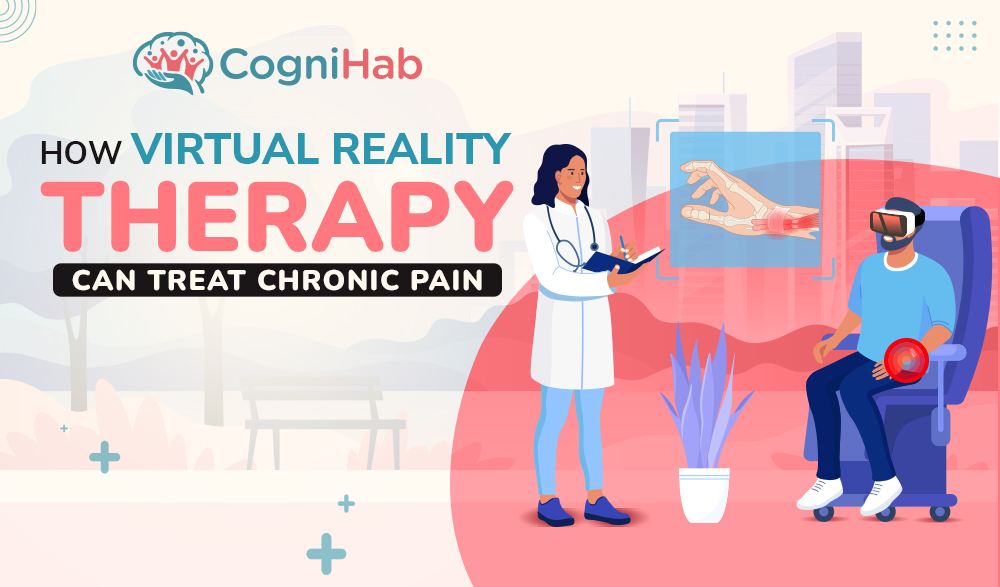7 Uses of Augmented Reality in Healthcare Education
Since the outbreak of the global pandemic, the entire world is suffering through some unpreceded time. We are realizing the contribution of our real warriors who are fighting the deadly, invisible army at the forefront.
Our healthcare givers have emerged as the true heroes, protecting and treating the people to defeat such testing times.
It is now, more than ever, that we are realizing the role of the healthcare sectors and the various sacrifices made by the caregivers. Their genuine efforts are ensuring that we emerge victoriously. Hence, it is the caregivers, their skills, and their ability that hold the responsibility of the well-being of the patients.
It is imperative for augmented reality healthcare education to keep itself updated with the latest technology. These new methods are proving remarkable for saving patients' lives and ensuring their speedy recovery.
The skills of healthcare experts usually have a direct impact on a patient’s health. So it is crucial for them to make the right decisions in critical times, as it can save or take one’s life. For this reason, it’s extremely important to impart proper training and education to caregivers in the healthcare sector.
It improves the decision-making ability in stressful situations and also boosts confidence and skills to a great extent. The right education and the presence of the latest technology is helping the healthcare sector to advance.
Augmented Reality’s Role in Healthcare Education
Technology is transforming every aspect of human lives and healthcare is one to benefit the most. The ongoing crisis has shown the need for reimagining healthcare studies. The right practice of technology can improve the functioning of healthcare organizations. AR technology has proved efficient in delivering enhanced care for patients.
The realm of augmented reality is not only confined to the entertainment sectors anymore. It is bringing significant and rapid advances by fulfilling important purposes in the healthcare sector.
See Also: Virtual Reality for Stroke Rehabilitation
Augmented reality technology enables computer-generated data, information, or imagery to join physical objects in real-time. The information rendered by AR helps people to carry out tasks in the real scenario, by uplifting the insight of the people using it.
The change in the perception of healthcare education came in, with the introduction of augmented reality. From educating students to preparing certain procedures, AR is upgrading every feature.
The digital combination of augmented reality and mixed reality has shown widespread applications in the field of medical education, training, surgical planning. It has an immense ability to guide complex medical procedures.
Augmented reality, through its display-based system, combines real and virtual images. These virtual images, enhance the real-world experience by making the show interactive in real-time.
This manipulates the users and gives them an impression of reality. They are fully occupied in the wisely constructed artificial, yet the real world.
Unlike virtual reality, where an individual stays totally immersed in the virtual world, augmented reality puts together a union of physical and virtual environments.
Augmented reality’s benefits for the healthcare sector are manifold. This is major as augmented reality works on mechanisms such as sensors, displays, embedded electronic devices.
See Also: Virtual reality Solution for pain relief
Augmented Reality In Medical Education and Training
Augmented reality is, at present, one of the most promising digital health technologies.
Read on to know more about how augmented reality is helping in medical education and training.
● AR Can Assist Surgeons
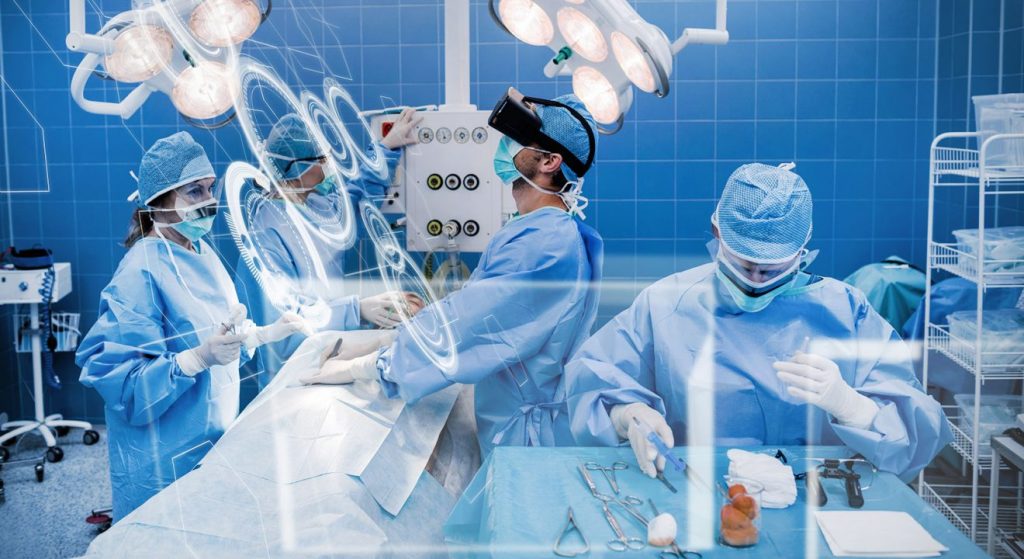 During the time of critical and complex surgeries, precisions are of prime importance. In this scenario, augmented reality efficiently helps surgeons to perform complex surgeries.
During the time of critical and complex surgeries, precisions are of prime importance. In this scenario, augmented reality efficiently helps surgeons to perform complex surgeries.
Be it a minimum invasive procedure or operating a brain tumor, treating patients with deceases and disorders like, speech disorder, vision therapy, spinal injury, Parkinson's Disease treatment, cerebral palsy, and multiple sclerosis, virtual reality and augmented reality can be life-saving and can treat patients effortlessly.
● Better Understanding of Drugs
Augmented reality helps pharma companies by providing essential drug information. Lab workers can observe and understand the working of drugs inside the human body in a three-dimensional version with the help of an augmented technology-enabled kit.
● Ophthalmology
Cataract surgery is one of the main fields of ophthalmology training in augmented reality education. The eyes are one of the most sensitive areas of human structure. Augmented reality-enabled training and VR technology in ophthalmology help new physicians enhance their skills before handling a critical case.
● Better Understanding of Human Anatomy
Augmented reality, by combining real and virtual images, can help aspiring healthcare experts. It helps them to understand human anatomy in a more precise and spectacular way.
It enables the students to visualize and perceive every muscle and vein present in the human body in a three-dimensional vision. In this way, augmented reality can revolutionize medical education. 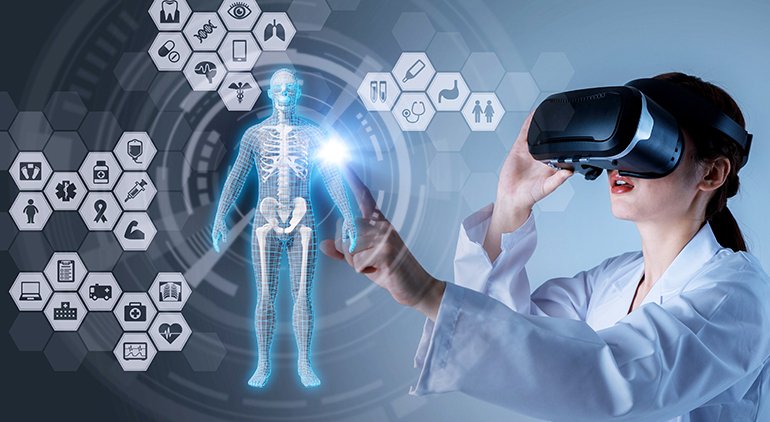
Use of AR in healthcare education
● Healthcare education can be broadly divided into two categories. One is theoretical knowledge and the other is the application of that knowledge in the practical realm. It is vital for medical students to grasp effective practical skills. It is important because healthcare deals with a very volatile, gentle, and difficult system which is the human body.
● Augmented reality magnifies the learning process. It can recreate or simulate certain conditions that help students to practice with virtual objects that resemble the human body and organ. Like old-school learning, they do not require a real patient. In this way, augmented reality prevents the process of life risk.
● Hence, augmented reality is being integrated into healthcare education extensively. It provides real-life-like experiences that have low risks, affordable, yet inefficient training along with real-time feedback. There is assistance from the instructors, that can ensure better results in the education of the required skills.
Cognihab is using the effective educational potential of AR to re-form virtual training scenarios. Cognihab’s next-generation AR-based solution helps students to become adept in handling complex cases. It provides learning opportunity to learn techniques and enhance their ability and professionalism


